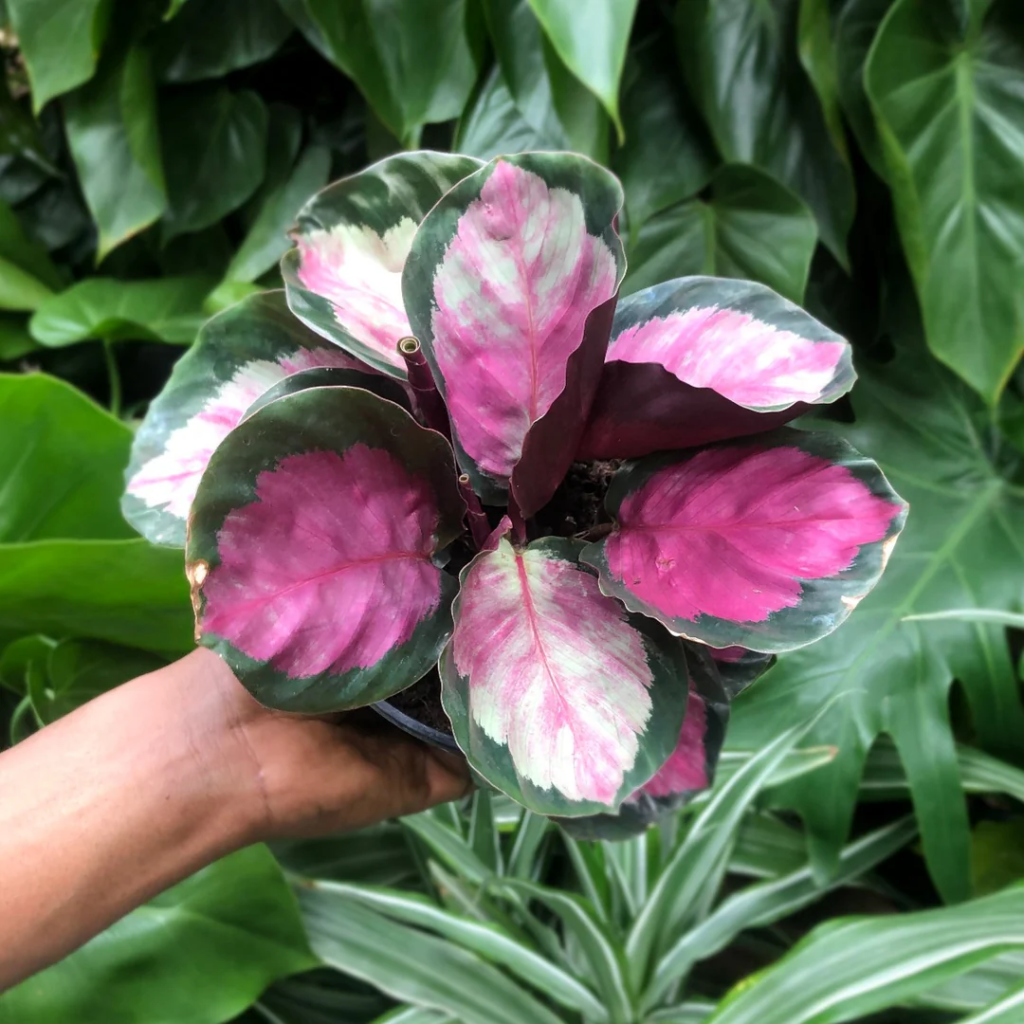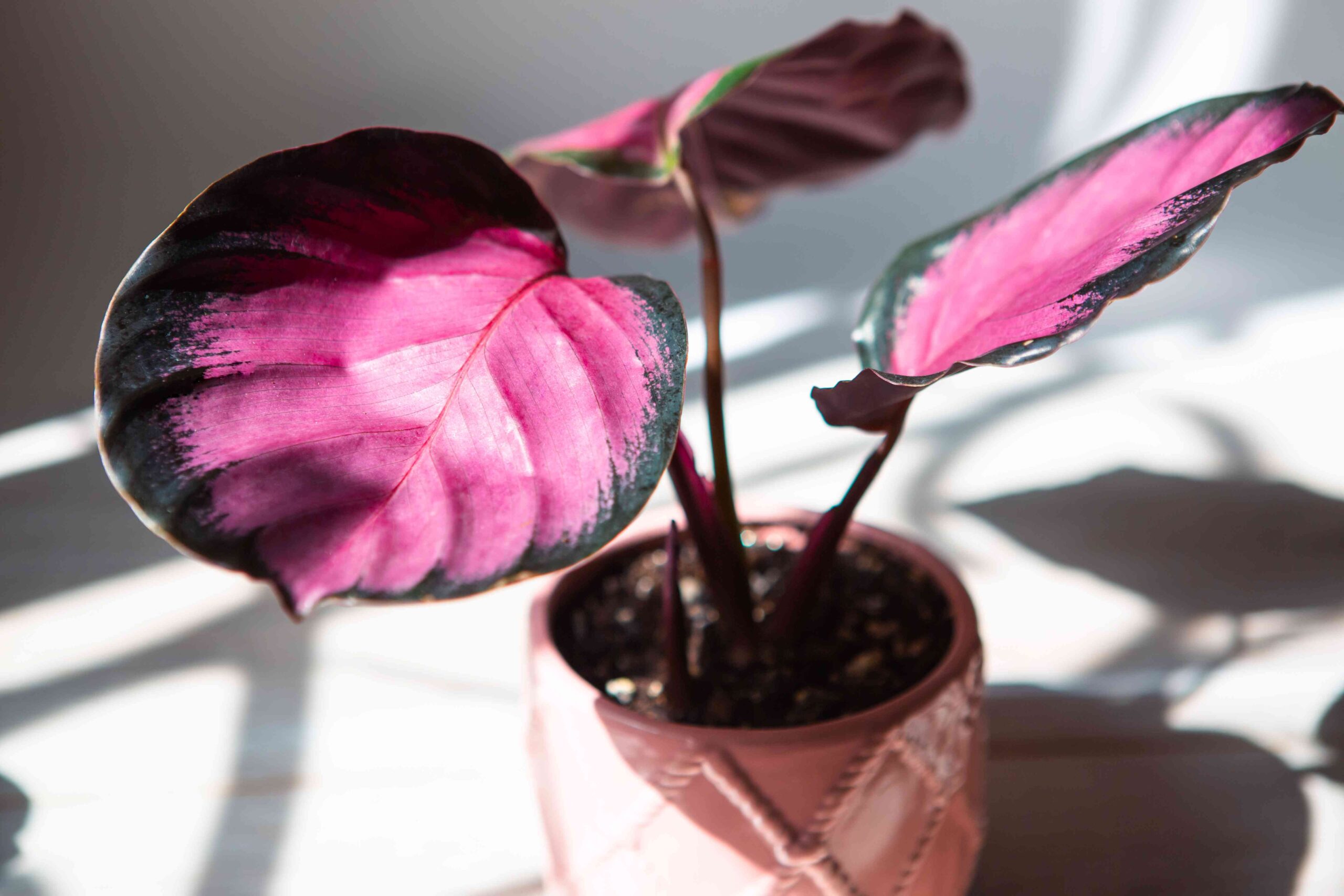By Holly Owens, Contributing Writer
The Calathea roseopicta, adored for its vibrant leaves and intricate patterns, is a showstopper in any indoor plant collection. Its lush foliage not only elevates the ambiance of your space but also showcases nature’s artistic side. However, keeping this tropical beauty thriving requires a thoughtful approach to its care.
Whether you’re an experienced plant parent or just starting out, the following tips will help you master the art of growing and nurturing this remarkable plant.
1. Choose the Perfect Spot
Calathea roseopicta flourishes in bright, indirect light. Place it near a window with filtered sunlight or behind sheer curtains to shield it from harsh rays. Direct sunlight can scorch its leaves, leading to faded or discolored foliage.
2. Keep Humidity High
As a tropical plant, the Calathea roseopicta loves humidity. To mimic its natural environment:
- Use a humidifier.
- Place it on a humidity tray filled with water and pebbles.
- Group it with other plants to increase surrounding moisture.
Additionally, mist its leaves occasionally, but avoid overdoing it, as excess moisture can encourage fungal issues.
3. Water Consistently
Maintain evenly moist soil without letting it become soggy. Use lukewarm, distilled, or filtered water, as Calatheas can be sensitive to fluoride and chlorine in tap water. Ensure your pot has drainage holes to prevent root rot and never let the soil dry out completely.
4. Use Well-Draining Soil
For optimal growth, plant your Calathea in a mix that ensures aeration and retains some moisture. A combination of potting soil, peat moss, and perlite works well to prevent waterlogging while keeping roots healthy.
5. Fertilize Wisely
Feed your Calathea every 2–4 weeks during the growing season (spring and summer) with a diluted, balanced, water-soluble fertilizer. Over-fertilizing can damage its roots, so always err on the side of caution.
6. Trim Dead Leaves
Regularly prune yellow or withered leaves to promote new growth and keep your plant looking its best. Use sterilized scissors to cut them close to the base, ensuring a clean, healthy trim.

7. Repot Periodically
Repot your Calathea roseopicta every 1–2 years to refresh its soil and provide space for growth. Choose a pot one size larger, and handle the roots carefully during the process to avoid stress.
8. Inspect for Pests
Common pests like spider mites and aphids can target your Calathea. Prevent infestations by:
- Cleaning the leaves with a damp cloth.
- Using neem oil or insecticidal soap if pests appear.
Routine checks will help you spot issues early and keep your plant pest-free.
9. Shield from Drafts
This plant is sensitive to temperature changes and drafts. Avoid placing it near open windows, doors, or heating and cooling vents, as sudden shifts can cause leaf curling or browning.
10. Ensure Air Circulation
Good airflow helps prevent fungal infections and keeps your Calathea healthy. Avoid overcrowding it with other plants, giving it enough space to “breathe” while still enjoying the benefits of a humid environment.
11. Recognize Dormancy
During winter, the Calathea roseopicta enters a dormancy phase where its growth slows. During this time:
- Reduce watering slightly.
- Pause fertilizing.
- Continue providing adequate humidity and light to maintain its health until active growth resumes in spring.
By mastering these 11 essential tips, you’ll ensure your Calathea roseopicta thrives, becoming a lush centerpiece in your indoor sanctuary. With its vibrant foliage and intricate charm, this plant is bound to impress anyone who sees it.
Happy gardening!
